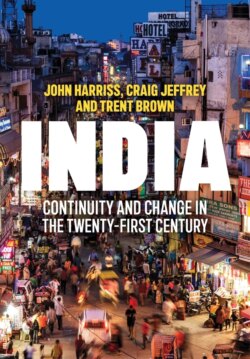Читать книгу India - Craig Jeffrey - Страница 16
Socialism
ОглавлениеNot only was India to be a democracy. It was also intended to be, according to the constitutional design, set on a path towards social democracy. When he moved the Resolution of Aims and Objects before the Constituent Assembly, Nehru made clear his own commitment to socialism – in the sense of economic democracy – even though he said that he and his colleagues had decided not to include the term in the Resolution, given the sentiments of many other members of the Assembly. In practice, Nehru himself and the other important leaders of the Congress equivocated, and were unwilling as well as unable to confront the power either of big business or of the dominant landholders – as Dr Ambedkar, the great leader of India’s untouchables, pointed out. In response to Nehru he said, ‘I should … have expected the Resolution to state in the most explicit terms that in order that there may be social and economic justice in the country, that there would be nationalisation of industry and nationalisation of land’ (CAD, 17 December 1946). Neither was ever seriously contemplated, and – as we discuss in chapter 8 – economic and social rights were relegated in the Constitution to the ‘Directive Principles’. These are statements of good intention, enjoined upon the government, but without any force in law. Thus it was that Ambedkar spoke, towards the end of the deliberations of the Constituent Assembly, of the ‘life of contradictions’ into which India was entering: ‘In politics we will have equality and in social and economic life we will have inequality … How long shall we continue to deny equality in our social and economic life? If we continue to deny it for long, we do so only by putting our political democracy in peril’ (CAD, 25 November 1949). The later trajectory of Indian democracy bears out his fears.
But Nehru’s commitments were not only rhetorical. He had spoken before the Constituent Assembly of its being the responsibility of the members not only ‘to free India through a new constitution’, but ‘to feed the starving people, to clothe the naked masses, and to give every Indian the fullest opportunity to develop himself according to his capacity’ (CAD, 22 January 1947). Entirely in line with the development theory of the time (Harriss 2014), Nehru and his colleagues in government believed that these objectives, vital to the legitimacy of the new state that came into being in 1947, could best be achieved through economic planning, and a project of development in which the state would play the central role. But Nehru, as he once said, saw India as pursuing a ‘third way’ between the capitalism of the West and the communism of the Soviet Union and the Eastern Bloc, combining directive planning and accommodative democratic politics (Corbridge and Harriss 2000: 43, 55). The results (as we argue in chapter 2) were not entirely disappointing, but they did lead India, eventually, into a pattern of economic development in which growth barely, if at all, kept pace with population growth, being sacrificed to the special interests of monopolistic big business, rich peasants, and bureaucrats and white-collar professionals. This was the era of what came to be described as the ‘licence-permit-quota raj’, in which big profits could be made from rents rather than from the improvement of productivity. Agriculture, still by far the most important sector of the economy, was at first rather neglected by the state, and then was sought to be modernized through the application of technology and of improved varieties of wheat and rice (in the ‘green revolution’). This did successfully increase the production of cereals, but it left behind the very many cultivators in the large areas of the country lacking in assured irrigation. The environmental impact of the pattern of development, in agriculture and more generally, was accorded scant attention (see chapter 5). But perhaps the most serious failures were the neglect of investment in health and the lack of attention to education. There was a glaring failure to realize the promise in the Constitution that there should be universal primary education within ten years of its promulgation. Given pervasive ill-health and poor educational opportunities, what chance did most Indians have of ‘developing themselves according to their capacities’? We discuss these continuing problems in chapters 3, 4 and 13.
It came to be recognized, in the 1970s, that economic development was not bringing about the kind of transformation in the lives of the mass of the Indian people that the country’s leaders at the time of independence had looked for. The scale of the problems of poverty in India had to be acknowledged by government, and a number of poverty alleviation programmes were introduced. But there was also eloquent questioning of the model of economic development that was being pursued – and this began to change in the next decade (as we discuss in chapter 2).
